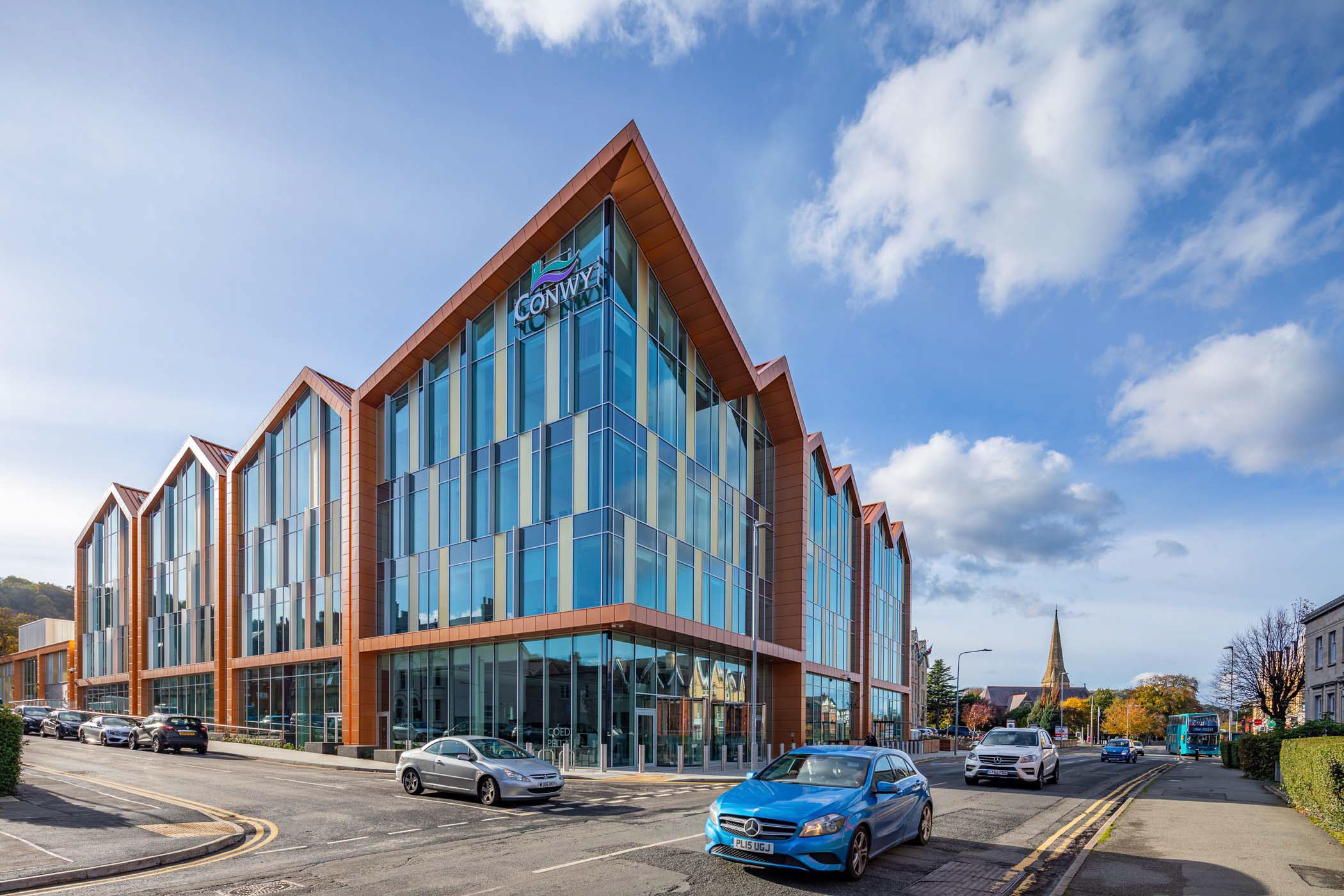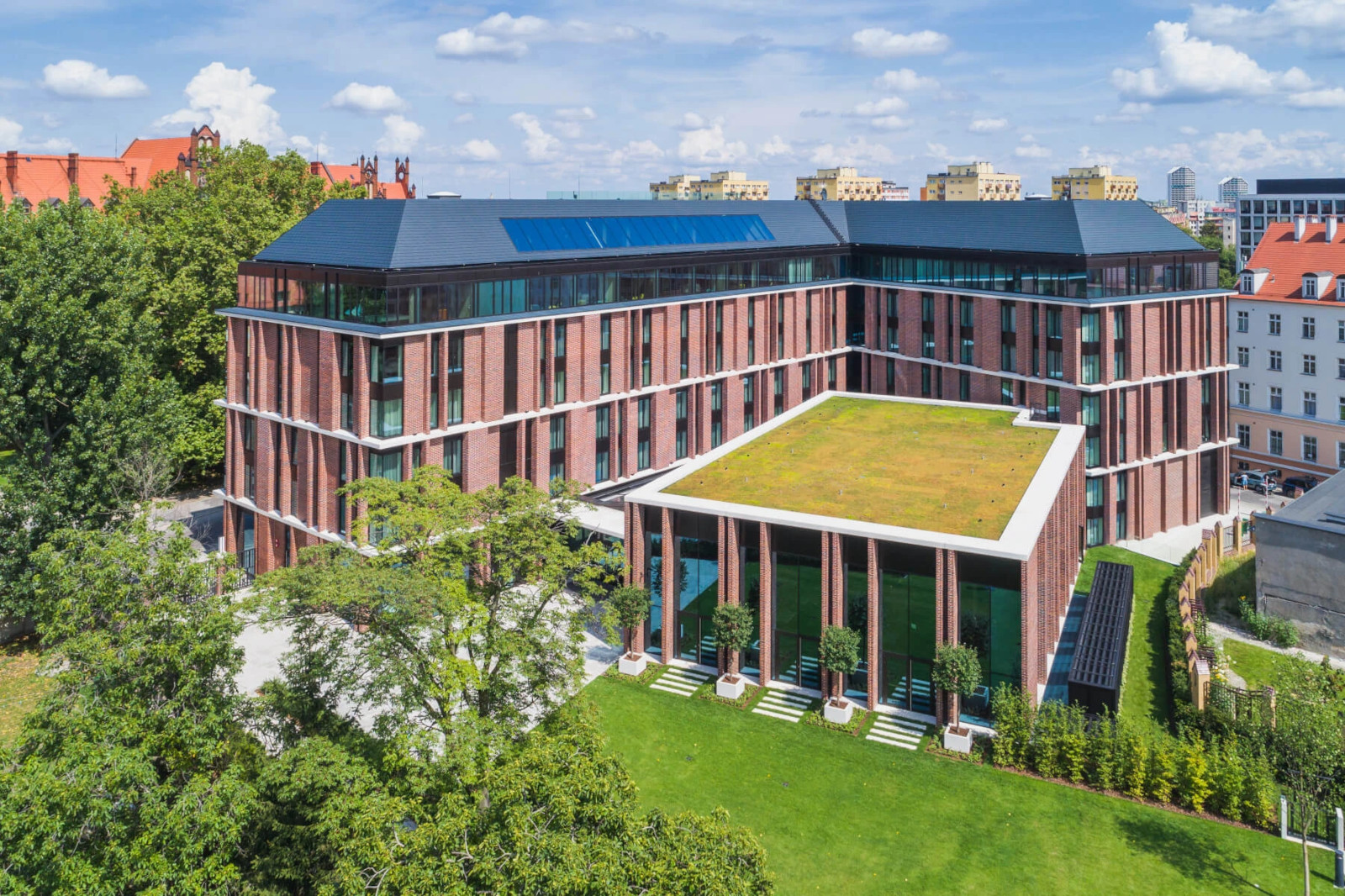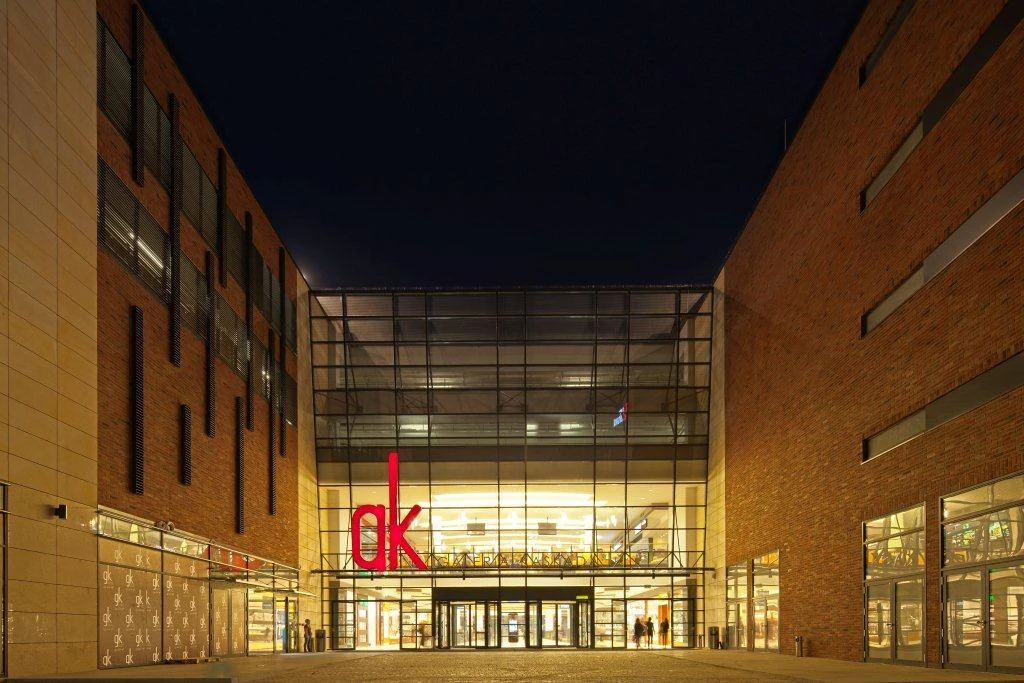DGNB certification: 4 facts you should know
The German DGNB certification system has been designed to assess buildings and even entire city quarters comprehensively. Get to know the essential facts about this certification system.
1. Developed in Germany, the DGNB is an international certificate
The holistic DGNB certification system was developed in 2008 by the non-profit association Deutsches Gesellschaft fuer Nachhaltiges Bauen (DGNB) in close cooperation with the Federal Ministry for Transport, Construction and Urban Development (BMVBS). The solution remains in use today as an effective tool for planning and assessing sustainable buildings not only in Germany, but also in more than 21 countries.

CONWY COUNCIL OFFICES, CONWY, UNITED KINGDOM. Systems used: MB-SR50N, MB-SR60N.Certificate: BREEAM Excellent
2. DGNB analyses a building from “head to toe”
The DGNB system relies on six key evaluation criteria that take into account the entire life cycle of buildings.
Its qualitative assessment includes the following criteria:
- Ecological quality: including but not limited to an assessment of ecological balance, types of environmental risks, the sourcing of construction materials, water requirements, energy requirements, waste generation and space management.
- Economic quality: an assessment of the overall cost generated by the building over its life cycle, as well as adaptability and business (market) attractiveness.
- Socio-cultural and functional quality: a broad evaluation category, including criteria related to visual comfort, acoustics, thermal comfort, cycling facilities, room layout features and, quite importantly, assessments of the health and well-being of users.
- Technical quality: factors considered are fire safety, soundproofing, convertibility (adaptability) and recyclability (eco-friendly materials, such as recyclable aluminium), and protection against noise or harmful emissions, to name but a few.
- Process quality: the evaluation covers project preparation, integration of planning, sustainability aspects, quality of execution and correct commissioning of the building.
- Location quality: what is put under scrutiny here is the accessibility of amenities by function, the availability of utilities and infrastructure, the condition of the location and surroundings, the quality of transport options, and the micro-location risk.

THE BRIDGE, Wrocław, Poland.Systems used: MB-78EI, MB-86 SI, MB-SR50N EFEKT.Certificate: LEED Gold
3. DGNB specialists give one of three ratings
The certificates can have one of three names, corresponding to the final building rating.
- BRONZE certificate: awarded to a building when the total level of compliance with the requirements is at 50%, with the minimum level of achievement in each category at 35%.
- SILVER certificate: awarded to a building when the total level of compliance with the requirements is at 65%, with the minimum level of achievement in each category at 50%.
- GOLD certificate: when the total level of compliance with the requirements is at 80%, with the minimum level of achievement in each category at 65%.
One good example of a project that received the highest score in DGNB certification is Galeria Kaskada, a shopping centre located in Szczecin.
“Thanks to our wide range of systems featuring excellent thermal or acoustic insulation parameters, the building achieved the best possible rating. We used six different systems: MB-59 Casement, MB-70 HI, MB-70 US, MB-78EI, MB-SR50 A, MB-SR50 HI+. Each of them performed an important function, and the effect was objectively evaluated and recognised by DGNB specialists, as evidenced by the highest possible rating, the GOLD certificate,” comments Rafael Altheim from Aluprof, an international manufacturer of aluminium systems in Europe.

Galeria Kaskada, Szczecin, Poland. Systems used: Systems used: MB-59S Casement, MB-70HI, MB-70US, MB-78EI, MB-SR50 A, MB-SR50 HI. Certificate: DGNB Gold
4. DGNB and other certifications offer an effective response to the climate crisis
Certifications such as DGNB are a viable response to the climate crisis and energy transition. Equally important, DGNB certification can also be used for major renovation and retrofitting of existing buildings.
Green certificates represent a real and measurable dimension of the implementation of the European Union’s ambitious plans for the decarbonisation of Europe, or the renovation wave that is also needed in this context.
